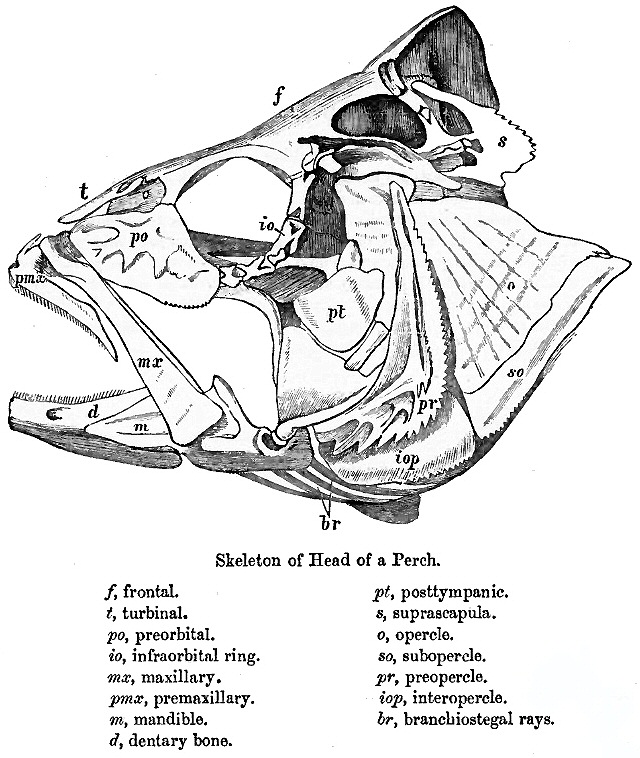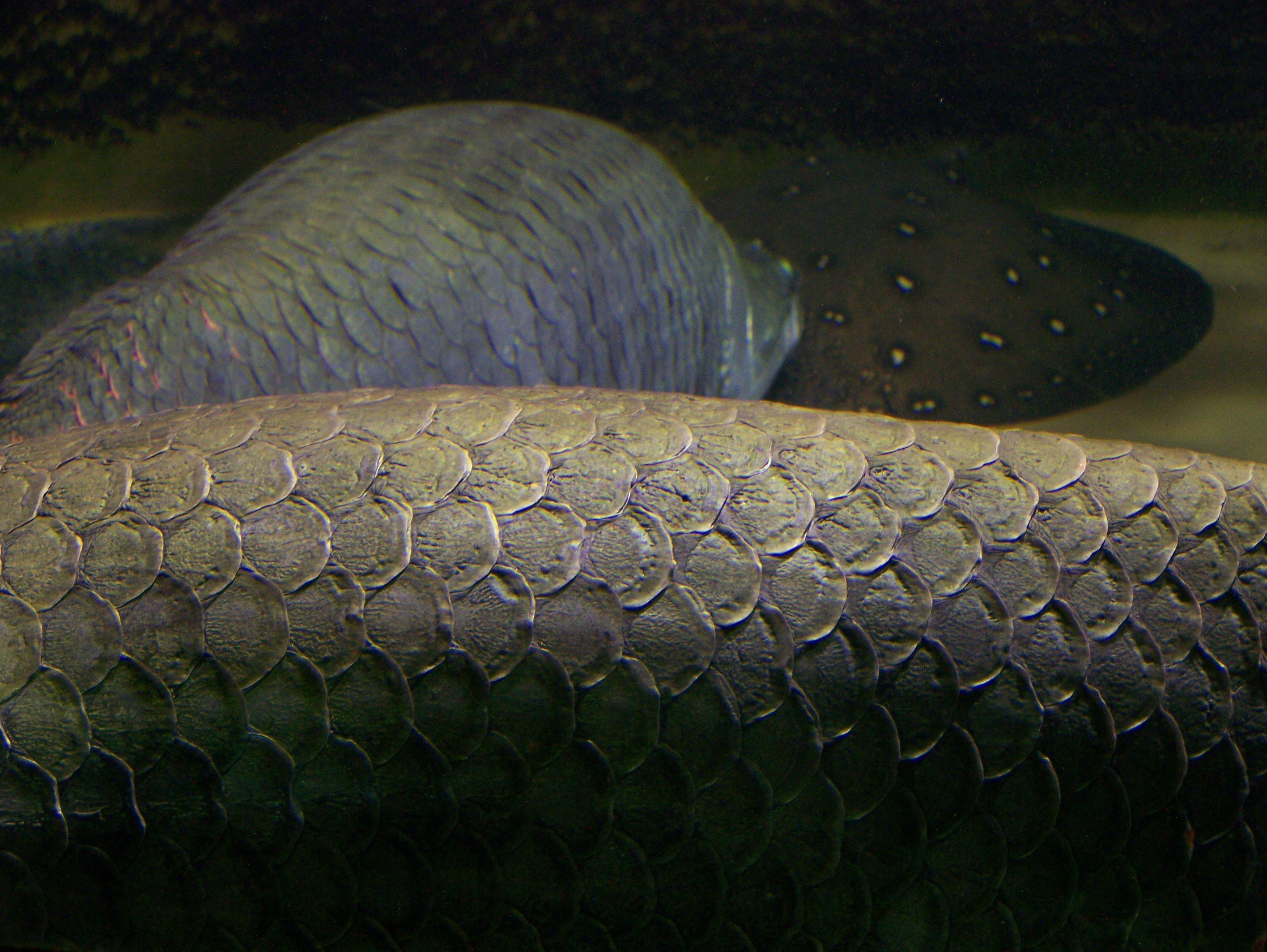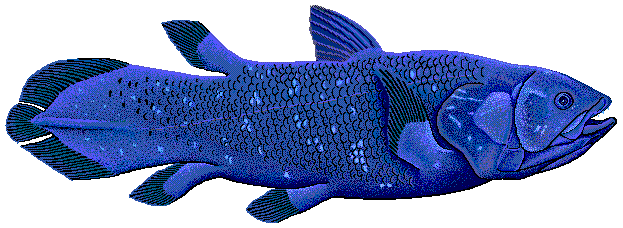|
Osteoglossomorpha
Osteoglossomorpha is a group of bony fish in the Teleostei. Notable members A notable member is the arapaima (''Arapaima gigas''), the largest freshwater fish in South America and one of the largest bony fishes alive. Other notable members include the bizarre freshwater elephantfishes of family Mormyridae. Systematics Most osteoglossomorph lineages are extinct today. Only the somewhat diverse "bone-tongues" (Osteoglossiformes) and two species of mooneyes (Hiodontiformes) remain. The ichthyodectiform fishes from the Jurassic and Cretaceous periods were once classified as osteoglossomorphs, but are now generally recognized as stem teleosts. Basal and ''incertae sedis'' (Extinct) * Genus †'' Coriops'' Estes, 1969 (possible hiodontid affinities) * Genus †'' Harenaichthys'' Kim ''et al.'', 2022 * Genus †'' Paralycoptera'' Chang & Chou, 1977 * Genus †'' Jinanichthys'' Ma & Sun 1988 Liaoxiichthys.html" ;"title="'Liaoxiichthys">'Liaoxiichthys'' Su 1992* Genus †''Joffri ... [...More Info...] [...Related Items...] OR: [Wikipedia] [Google] [Baidu] |
Arapaima
The arapaima, pirarucu, or paiche is any large species of bonytongue in the genus ''Arapaima'' native to the Amazon Basin, Amazon and Essequibo River, Essequibo basins of South America. ''Arapaima'' is the type genus of the subfamily Arapaiminae within the family Osteoglossidae.Castello, L.; and Stewart, D.J (2008). Assessing CITES non-detriment findings procedures for Arapaima in Brazil.' NDF Workshop case studies (Mexico 2008), WG 8 – Fishes, Case study 1 They are among the world's largest freshwater fish, reaching as much as in length. They are an important food fish. They have declined in the native range due to overfishing and habitat loss. In contrast, arapaima have been Introduced species, introduced to several tropical regions outside the native range (within South America and elsewhere), where they are sometimes considered invasive species. In Kerala, India, arapaima escaped from aquaculture ponds after 2018 Kerala floods, floods in 2018. Its Portuguese language, Portu ... [...More Info...] [...Related Items...] OR: [Wikipedia] [Google] [Baidu] |
Teleostei
Teleostei (; Ancient Greek, Greek ''teleios'' "complete" + ''osteon'' "bone"), members of which are known as teleosts (), is, by far, the largest group of ray-finned fishes (class Actinopterygii), with 96% of all neontology, extant species of fish. The Teleostei, which is variously considered a Division (zoology), division or an infraclass in different taxonomic systems, include over 26,000 species that are arranged in about 40 order (biology), orders and 448 family (biology), families. Teleosts range from giant oarfish measuring or more, and ocean sunfish weighing over , to the minute male anglerfish ''Photocorynus spiniceps'', just long. Including not only torpedo-shaped fish built for speed, teleosts can be flattened vertically or horizontally, be elongated cylinders or take specialised shapes as in anglerfish and seahorses. The difference between teleosts and other bony fish lies mainly in their jaw bones; teleosts have a movable premaxilla and corresponding modifications ... [...More Info...] [...Related Items...] OR: [Wikipedia] [Google] [Baidu] |
Coriops
''Coriops'' is an extinct genus of freshwater osteoglossomorph fish, possibly a hiodontiform, with a single species (''C. amnicolus'') known from the Late Cretaceous of western North America. Taxonomy Sepkoski's compendium of marine fossil genera has it classified as an eel, but it has also been previously classified in the Elopiformes and the Osteoglossomorpha. More recent studies have affirmed it as being an osteoglossomorph, and have suggested that it may be a relative of the extant mooneyes (Hiodontidae). An indeterminate hiodontid specimen (found alongside the '' Raptorex'' holotype) from the Nemegt Formation of Mongolia was found to share close similarities with both '' Hiodon'' and ''Coriops''. Distribution Fossils of an indeterminate ''Coriops'' species are known as early as the Cenomanian of the Naturita Formation in Grand Staircase-Escalante National Monument in Utah, USA. Fossils of the species ''C. amnicolus'' become more common across a large area of Nort ... [...More Info...] [...Related Items...] OR: [Wikipedia] [Google] [Baidu] |
Arapaima
The arapaima, pirarucu, or paiche is any large species of bonytongue in the genus ''Arapaima'' native to the Amazon Basin, Amazon and Essequibo River, Essequibo basins of South America. ''Arapaima'' is the type genus of the subfamily Arapaiminae within the family Osteoglossidae.Castello, L.; and Stewart, D.J (2008). Assessing CITES non-detriment findings procedures for Arapaima in Brazil.' NDF Workshop case studies (Mexico 2008), WG 8 – Fishes, Case study 1 They are among the world's largest freshwater fish, reaching as much as in length. They are an important food fish. They have declined in the native range due to overfishing and habitat loss. In contrast, arapaima have been Introduced species, introduced to several tropical regions outside the native range (within South America and elsewhere), where they are sometimes considered invasive species. In Kerala, India, arapaima escaped from aquaculture ponds after 2018 Kerala floods, floods in 2018. Its Portuguese language, Portu ... [...More Info...] [...Related Items...] OR: [Wikipedia] [Google] [Baidu] |
Teleost
Teleostei (; Ancient Greek, Greek ''teleios'' "complete" + ''osteon'' "bone"), members of which are known as teleosts (), is, by far, the largest group of ray-finned fishes (class Actinopterygii), with 96% of all neontology, extant species of fish. The Teleostei, which is variously considered a Division (zoology), division or an infraclass in different taxonomic systems, include over 26,000 species that are arranged in about 40 order (biology), orders and 448 family (biology), families. Teleosts range from giant oarfish measuring or more, and ocean sunfish weighing over , to the minute male anglerfish ''Photocorynus spiniceps'', just long. Including not only torpedo-shaped fish built for speed, teleosts can be flattened vertically or horizontally, be elongated cylinders or take specialised shapes as in anglerfish and seahorses. The difference between teleosts and other bony fish lies mainly in their jaw bones; teleosts have a movable premaxilla and corresponding modifications ... [...More Info...] [...Related Items...] OR: [Wikipedia] [Google] [Baidu] |
Osteoglossiformes
Osteoglossiformes , meaning "bony tongues" in Ancient Greek, is a relatively primitive order of ray-finned fish that contains two sub-orders, the Osteoglossoidei and the Notopteroidei. All of at least 245 living species inhabit freshwater. They are found in South America, Africa, Australia and southern Asia, having first evolved in Gondwana before that continent broke up. In 2008, several new species of marine osteoglossiforms were described from the Danish Eocene Fur Formation, dramatically increasing the diversity of this group. This implies that the Osteoglossomorpha is not a primary freshwater fish group with the osteoglossiforms having a typical Gondwana distribution. The Gymnarchidae (the only species being '' Gymnarchus niloticus'', the African knifefish) and the Mormyridae are weakly electric fish able to sense their prey using electric fields. The mooneyes (Hiodontidae) are often classified here, but may also be placed in a separate order, Hiodontiformes. Members ... [...More Info...] [...Related Items...] OR: [Wikipedia] [Google] [Baidu] |
Shuleichthys
''Shuleichthys brachypteryx'' is an extinct species of ray-finned fish which existed in China during the Cretaceous period. Fossils of the fish were found in the Aptian Xiagou Formation of the Changma Basin. It is the only species in the genus ''Shuleichthys'' and cannot be placed in any order of the Osteoglossomorpha without making that order paraphyletic. References † A dagger, obelisk, or obelus is a typographical mark that usually indicates a footnote if an asterisk has already been used. The symbol is also used to indicate death (of people) or extinction (of species or languages). It is one of the mo ... Enigmatic ray-finned fish taxa Prehistoric ray-finned fish genera Cretaceous bony fish Aptian life Early Cretaceous vertebrates of Asia Fossils of China Fossil taxa described in 2010 {{paleo-rayfinned-fish-stub ... [...More Info...] [...Related Items...] OR: [Wikipedia] [Google] [Baidu] |
Hiodontiformes
Hiodontiformes is an order of ray-finned fish consisting of the two living species of the mooneye family, Hiodontidae, and three extinct genera. These are traditionally classified within the order Osteoglossiformes, a placement some authorities still follow. Fossil study of the extinct genus ''Yanbiania'' suggests that the hiodontids separated from other osteoglossomorphs early and thus may deserve a separate order. Taxonomy * Order Hiodontiformes McAllister 1968 sensu Taverne 1979 ** Genus †'' Chetungichthys'' Chang & Chou 1977 *** †''Chetungichthys brevicephalus'' Chang & Chou 1977 *** †''Chetungichthys dalinghensis'' Su 1991 ** Genus †'' Yanbiania'' Li 1987 *** †''Yanbiania wangqingica'' Li 1987 ** Genus †'' Plesiolycoptera'' Zhang & Zhou 1976 *** †''Plesiolycoptera daqingensis'' Zhang & Zhou 1976 *** †''Plesiolycoptera parvus'' ((Sytchevskaya, 1986) (syn ''Eohiodon (Gobihiodon) parvus'' Sytchevskaya, 1986) ** Family Hiodontidae (mooneyes) Valenciennes 18 ... [...More Info...] [...Related Items...] OR: [Wikipedia] [Google] [Baidu] |
Freshwater Elephantfish
The Mormyridae, sometimes called "elephantfish" (more properly freshwater elephantfish), are a superfamily of weakly electric fish in the order Osteoglossiformes native to Africa. It is by far the largest family in the order, with around 200 species. Members of the family can be popular, if challenging, aquarium species. These fish have a large brain size and unusually high intelligence. They are not to be confused with the marine and brackish-water callorhinchid elephantfish (family Callorhinchidae) of Southern Hemisphere oceans. Description and biology The elephantfish are a diverse family, with a wide range of different sizes and shapes. The smallest are just in adult length, while the largest reach up to . They do, however, have a number of unique features in common. Firstly, their cerebellum is greatly enlarged, enabling them to interpret complex bio-electrical signals, and to the large size of the valve. Secondly, an auditory vesicle (a small bladder) is present inside t ... [...More Info...] [...Related Items...] OR: [Wikipedia] [Google] [Baidu] |
Bony Fish
Osteichthyes ( ; ), also known as osteichthyans or commonly referred to as the bony fish, is a Biodiversity, diverse clade of vertebrate animals that have endoskeletons primarily composed of bone tissue. They can be contrasted with the Chondrichthyes (cartilaginous fish) and the extinct placoderms and acanthodians, which have endoskeletons primarily composed of cartilage. The vast majority of extant taxon, extant fish are members of Osteichthyes, being an extremely diverse and abundant group consisting of 45 order (biology), orders, over 435 family (biology), families and 28,000 species. The group is divided into two main clades, the ray-finned fish (Actinopterygii, which makes up the vast majority of extant fish) and the lobe-finned fish (Sarcopterygii, which gave rise to all land vertebrates, i.e. tetrapods). The oldest known fossils of bony fish are about 425 million years old from the late Silurian, which are also transitional fossils showing a dentition, tooth pattern th ... [...More Info...] [...Related Items...] OR: [Wikipedia] [Google] [Baidu] |
Joffrichthys
''Joffrichthys'' is a genus of prehistoric bony fish. This North American genus includes three species, ''J. symmetropterus'', ''J. tanyourus'' and ''J. triangulpterus''. The last species is known from the Paleocene of the Sentinel Butte Formation of North Dakota. See also * Prehistoric fish * List of prehistoric bony fish This list of prehistoric bony fish is an attempt to create a comprehensive listing of all Genus, genera from the fossil record that have ever been considered to be bony fish (class Osteichthyes), excluding purely vernacular terms. The list includ ... References Prehistoric ray-finned fish genera Osteoglossidae {{osteoglossiformes-stub ... [...More Info...] [...Related Items...] OR: [Wikipedia] [Google] [Baidu] |
Mooneye
Hiodontidae, commonly called mooneyes, is a family of ray-finned fish with a single included genus ''Hiodon''. The genus comprise two extant species native to North America and three to five extinct species recorded from Paleocene to Eocene age fossils. They are large-eyed, fork-tailed fish that superficially resemble shads. The vernacular name comes from the metallic shine of their eyes. The higher classification of the mooneyes is not yet fully established. Some sources have place them in their own order, Hiodontiformes, while others retain them in the order Osteoglossiformes. Species *''Hiodon alosoides'' (Rafinesque, 1819) The goldeye, ''Hiodon alosoides'', is widespread across eastern North America, and is notable for a conspicuous golden iris in the eyes. It prefers turbid slower-moving waters of lakes and rivers, where it feeds on a wide variety of organisms including insects, crustaceans, small fish, and mollusks. The fish has been reported up to in length. *†''H ... [...More Info...] [...Related Items...] OR: [Wikipedia] [Google] [Baidu] |




